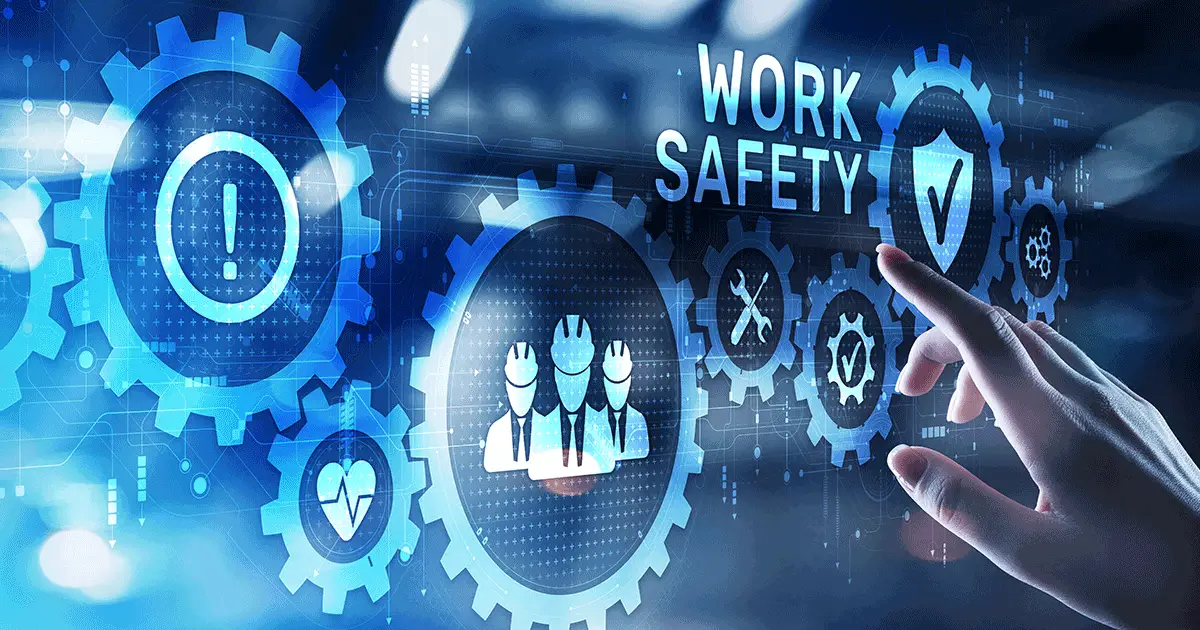In the realm of health and safety where worker well-being and regulatory compliance are paramount, digital transformation has the power to reshape traditional practices and revolutionise safety protocols.
From Virtual Reality (VR) simulations to Augmented Reality (AR) guidance, Extended Reality (XR) technologies, along with digital workflow software, are empowering organisations. They enhance safety, streamline processes, and create a culture of continuous improvement.
In this blog, Brad Flook, Intoware’s CRO explores how digital transformation is empowering the health and safety sector. He examines the crucial role that XR technology and digital workflow software are playing in this evolution.
Driving Efficiency and Safety through Digital Transformation
Did you know that for every £1 invested in digital transformation technology, companies can expect a return of £4–£6 in operational savings within three years? These figures highlight the significant ROI potential of digitalisation in health and safety initiatives. Digital transformation is driving efficiency and safety by providing real-time access to critical information. It facilitates remote inspections and enables proactive risk management. By digitising workflows and automating manual processes, organisations can reduce human error. They can also ensure regulatory compliance and improve overall safety outcomes.
Streamlining Processes with Digital Workflows
Digital workflow software streamlines processes to improve efficiency and ensure compliance with regulatory requirements. By digitalising paper and human-based processes, digital work instructions empower health and safety professionals. They enhance accountability, visibility, and responsiveness across their operations.
- Incident Reporting: Digital workflows enable workers to quickly and easily report accidents, near misses, and hazards. Then the automated processes ensure that incidents are promptly escalated to the appropriate personnel for investigation and corrective action.
- Compliance Tracking: Digital workflows ensure compliance with regulatory requirements and provide a 100% accurate digital audit log. By digitalisating processes, companies can identify root causes and implement corrective measures, to prevent it happening again in the future.
- Task Management: Digital workflows enable job scheduling and workforce management. This allows companies to assign tasks, track progress, and communicate effectively across teams.
- Ensure Consistency: Digital workflows ensure tasks are always completed in a consistent way to remove errors and avoid unnecessary risk. By empowering workers with the tools they need to complete a job effectively, digital workflows enhance responsiveness in health and safety procedures.
- Version Control: Document management allows organisations to store, organise, and access critical health and safety documentation in a secure and compliant manner. Version control ensures that everyone has access to the most up-to-date policies, procedures, and training materials, reducing the risk of errors and discrepancies.
- Continuous Improvement: Digital workflows enable companies to monitor, track, and identify areas for improvement in health and safety operations. Real-time data and reports provide health and safety professionals with actionable insights into safety trends, emerging risks, and compliance status. This helps to drive continuous improvement initiatives and optimise operations.
Enhancing Safety with XR Technology
The global XR market size was valued at $18.4 billion in 2020 and is projected to reach $346.9 billion by 2027, with a CAGR of 42.9% during the forecast period. XR technology, including VR and AR, is revolutionising safety training, hazard recognition, and incident response in the health and safety industry. Immersive simulations allow workers to experience hazardous scenarios in a safe virtual environment. This improves retention and preparedness. Additionally, there’s the option of AR overlays that provide real-time guidance and information. This enhances situational awareness and reduces the risk of accidents.
Overcoming Challenges and Looking Ahead
Despite the numerous benefits of digital transformation, companies may encounter challenges such as resistance to change, budget constraints, and cybersecurity concerns. Addressing these challenges requires strong leadership, effective communication, and a culture of innovation. Looking ahead, emerging trends such as artificial intelligence (AI) and the Internet of Things (IoT) are poised to further transform the health and safety landscape. They offer new opportunities for efficiency and risk reduction.
Digital transformation, powered by XR technology and digital workflows, are revolutionising health and safety operations. By embracing these technologies and leveraging their full potential, companies can improve overall safety, streamline processes, and drive continuous improvement.
I hope this blog has shown the transformative potential of digital transformation in health and safety. It has also hopefully inspired you to explore new ways to enhance the safety of your employees.
If you’re interested in the benefits of digital transformation on your health and safety practices, please contact us to find out more. Or, check out episode 8 of our Digital Transformation Bytes podcast.

